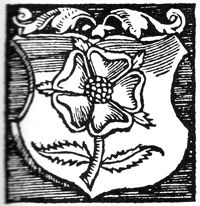Uznach county
The historic county and later bailiff of Uznach was at the upper end of Lake Zurich in eastern Switzerland. It included the seven Tagwen (communities) Eschenbach , Schmerikon , Uznach , Goldingen , St. Gallenkappel , Ernetschwil and Gommiswald . In 1798 the Bailiwick of Uznach was dissolved as a political entity.
history
County of Uznach (13th century to 1469)
After the collapse of the Duchy of Swabia , local nobles dominated events in the area around the upper Lake Zurich. You were in office as castellan over the possessions of the monasteries of St. Gallen and Einsiedeln in this region. The most famous of these were the Lords of Rapperswil and the Counts of Toggenburg . The Uznach area came to the Lords of Toggenburg around 1195 through the marriage of Guta von Rapperswil to Diethelm von Toggenburg. When they received the title of Count in 1209, they founded the city and county of Uznach, which they ruled until they died out in 1436. The county passed to their heirs, the Lords of Raron , who pledged the county to the cantons of Schwyz and Glarus in 1437 . Since the city of Zurich also asserted hereditary claims against the county, the Old Zurich War broke out in 1439 over the legacy of the Counts of Toggenburg. After the defeat of Zurich, Schwyz and Glarus were able to purchase the county of Uznach in 1469. It became a common rule of the two cantons.
Landvogtei Uznach (1469–1798)
The Landvogtei Uznach was initially divided into two judicial districts: City of Uznach (Schultheiss in Uznach) and Land (Amman am Uznaberg ), which were reunited in 1472. However, the subjects retained extensive rights of autonomy. The men of the county who were capable of military service and who were able to vote met every two years for a rural community and the comrades in the seven Tagwen largely managed their own affairs.
The town of Uznach took on the function of an administrative center when the city council and the city court were merged with those of the bailiwick in 1490. It was also the seat of the district administrator. The governor was alternately provided by Glarus and Schwyz, but did not have to reside in Uznach.
During the Reformation , the Catholic canton of Schwyz succeeded in preventing the Reformation from preaching in the Bailiwick of Uznach. The reformed pastor Jakob Schlosser from Uznach was burned at the stake. This incident sparked the First Kappel War , in which Zurich tried again unsuccessfully to gain possession of Uznach. With the victory of the Catholic towns, the old faith was restored and, under pressure from Schwyz, only Catholic bailiffs were appointed in Uznach until 1798.
Helvetic, mediation and the canton of St. Gallen
After the collapse of the old Swiss Confederation , the cantons of Schwyz and Glarus released the Uznach bailiwick into independence in 1798. The estates then tried in vain to unite with the Swiss subject area of March , the Landvogtei Gaster and the city of Rapperswil to form their own canton, "Unter dem Walensee ". In the Helvetic Republic , the former Bailiwick of Uznach became part of the canton of Linth and, after its dissolution in 1803, part of the canton of St. Gallen . Together with the former Landvogtei Gaster and the city of Rapperswil and their former subject areas, Uznach formed the Uznach district. With the first democratic St. Gallen constitution of 1831, Gaster was separated and the remaining areas formed the lake district until 2001 .
coat of arms

The banner of the County of Uznach shows a laurel-framed, green-stemmed silver rose with a golden chalice (coat of arms of the city of Uznach ) on a red background. In the open quarter by the pole, the Holy Mary with child in a ray mandorla, also surrounded by a laurel wreath. Next to it appears the saying “O MATER DEI MEMENTO MEI” (O Mother of God remember me).
literature
- Bernhard Anderes: The Art Monuments of the Canton of St. Gallen, Vol. 4: The Lake District ( The Art Monuments of Switzerland ). Birkhäuser Verlag, Basel 1966.
Web links
- Alois Stadler: Uznach (county, bailiwick). In: Historical Lexicon of Switzerland .


